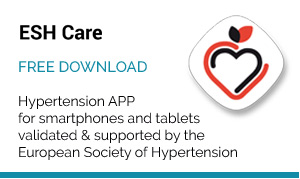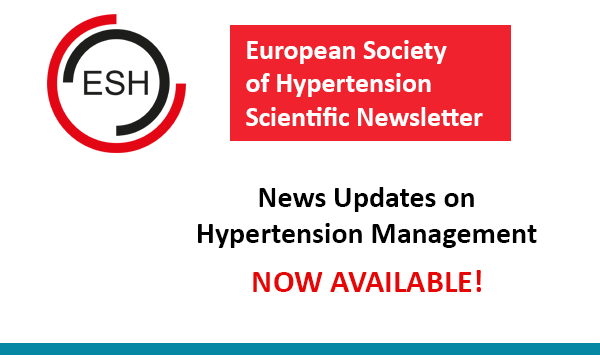Hypertension 2008
Poor BP Control? Don’t Blame Canada
The prevalence of hypertension continues to increase globally and education and guidelines both seem to have limited impact. With very few models for successful national programs, Canada seems to at least have a very good start at implementing a program with remarkable results.
First, the bad news: the prevalence of hypertension in the Canadian province of Ontario increased 60% from 1995 to 2005, with incidence rates increasing 25.7% from 1997 to 2004. Control of hypertension, however, is a very different story.
The recently published Ontario Survey on the Prevalence and Control of Hypertension revealed that while the overall prevalence of hypertension remains high, hypertension management has improved markedly, with substantial increases in both treatment rates and control rates. (1) Control rates, for example, increased from 12.1% in 1992 to 65.7% in 2006. Hypertension awareness stands at 87% and the treatment rate is 82%.
When compared to large sections of other countries, the current control rates in the province of Ontario appear to be the highest – by far. The only place giving Canada any competition for the top spot is a province in Cuba where 78% of respondents who had hypertension stated they were aware of their condition, 60% received treatment, and 40% had blood pressure control. (In the United States, which certainly has access to the same studies as Canada showing the damaging effects of hypertension, the treatment and control rate is 37%.)
What explains the huge increase in treated and controlled hypertensive patients among the 12 million residents of Ontario? An extensive knowledge-translation program called the Canadian Hypertension Education Program (CHEP) is getting a lot of the credit. (2-4)
Dissemination and Implementation
CHEP was initiated in 1997 to facilitate the dissemination and implementation of annually revised recommendations into clinical practice. The program is run by volunteers and relies on the cooperation of a large group of steering committee and partner organizations.
There are four steps each to the process of knowledge transfer and implementation. Knowledge transfer consists of:
1) definition of important messages;
2) tailoring messages according to end users;
3) development of tools to facilitate decision making; and
4) initiating implementation.
For implementation, it’s:
1) dissemination through printed and electronic media;
2) education for health care professionals and patients;
3) supporting organizational and systems changes; and
4) addressing identified barriers.
There are a number of annual dissemination initiatives ranging from 40 publications by or about CHEP and its recommendations, to booklets distributed to about 140,000 primary care physicians and up to 20,000 specialists, and widespread dissemination through a central website as well as many other websites.
According to Norm R.C. Campbell, MD, (who is from the University of Calgary, Alberta, and not Ontario, Canada), the success of the key messages is repetition, consistency, simplicity, and ease of adoption.
By the way, while the data for Ontario were recently published, that’s not to imply that CHEP isn’t working elsewhere in Canada. Using Canadian Health Surveys data between 1994 and 2003, the percentage of adult Canadians aware of being diagnosed with hypertension increased by 51% (from 12.37% to 18.74%; p < 0.001), and the percentage prescribed antihypertensive drugs increased by 66% (9.57% to 15.86%; p < 0.001). The proportion of those aware of the diagnosis of hypertension but not being treated with drugs was reduced by half during the same period: 1994 and 2003 (31.47% untreated to 15.34% untreated; p < 0.001).
Canada still has challenges, to be sure. Two-thirds of adults at high risk for cardiovascular disease because of comorbid diabetes and hypertension did not have blood pressure control and more than one-quarter had received no treatment. Control of systolic blood pressure has been achieved in only 58% of patients with known cardiovascular disease and who were at high risk for further events.
In a recent commentary, Dr. Campbell and Sailesh Mohan, MD, noted, “Perhaps one of the most important challenges is the prevention of hypertension. Although hypertension is preventable, it is estimated that the condition will develop in 90% of Canadians.” (5)
Overall, Dr. Campbell said at Hypertension 2008, CHEP has “been associated with a dramatic improvement in the management of hypertension in Canada and the volunteer-based program could be adapted by other countries”. He also invites interested parties who want to learn more to attend Hypertension 2010 in Vancouver.
Until then, if you want to remember who has the best record for improving hypertension treatment and control rates, just think: Oh, Canada!
References:
- Leenen FH, Dumais J, McInnis NH, et al. Results of the Ontario survey on the prevalence and control of hypertension. CMAJ 2008;178:1441-9.
- Onysko J, Maxwell C, Eliasziw M, et al. Canadian Hypertension Education Program. Large increases in hypertension diagnosis and treatment in Canada after a healthcare professional education program. Hypertension 2006;48:853-60.
- Campbell NR, Tu K, Brant R, et al. Canadian Hypertension Education Program Outcomes Research Task Force. The impact of the Canadian Hypertension Education Program on antihypertensive prescribing trends. Hypertension 2006;47:22-8.
- Campbell NR, McAlister FA, Brant R, et al. Canadian Hypertension Education Process and Evaluation Committee. Temporal trends in antihypertensive drug prescriptions in Canada before and after introduction of the Canadian Hypertension Education Program. J Hypertens 2003;21:1591-7.
- Mohan S, Campbell NR. Hypertension management in Canada: good news, but important challenges remain. CMAJ 2008;178:1458-60.






